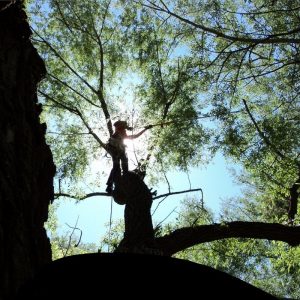- Formative: Juvenile and newly planted trees benefit most from formative pruning. Formative pruning aids in the development of preferable branching structure and removes undesirable limbs that may eventually become poorly attached/formed limbs.
- Structure: Pruning a tree for structure means to reduce/remove limbs that adversely affect the canopy of the tree. Limbs that have died should be removed entirely and limbs that are prone to fail should be reduced so to limit the possibility of failure. Structural pruning will improve the overall stability of the canopy as well as remove/reduce potential hazards.
- Retrenchment: Retrenchment pruning is intended for mature trees that have begun to decline. Limb dieback is removed as well as substantial healthy tissue to reinvigorate proximal (inner canopy) growth. By significantly reducing the distal portions of the canopy, retrenchment pruning can reinvigorate new growth as well as stabilize larger and more mature trees that have begun the senescent stage.
- Form: Pruning a tree for aesthetics. This is to provide a more symmetrical and balanced appearance to the canopy, allow for improved vista clearance as well as remove undesirable limbs that do not follow a pleasing line within the canopy.
- Reclamation: Size reductions for overgrown ornamental species. Midsized understory trees that, due to a lack of maintenance, have over grown their location/attractiveness. Reclamation pruning is often a multi phase initiative to reduce the size of ornamental trees while retaining a pleasing form as well as vigour and vitality.

